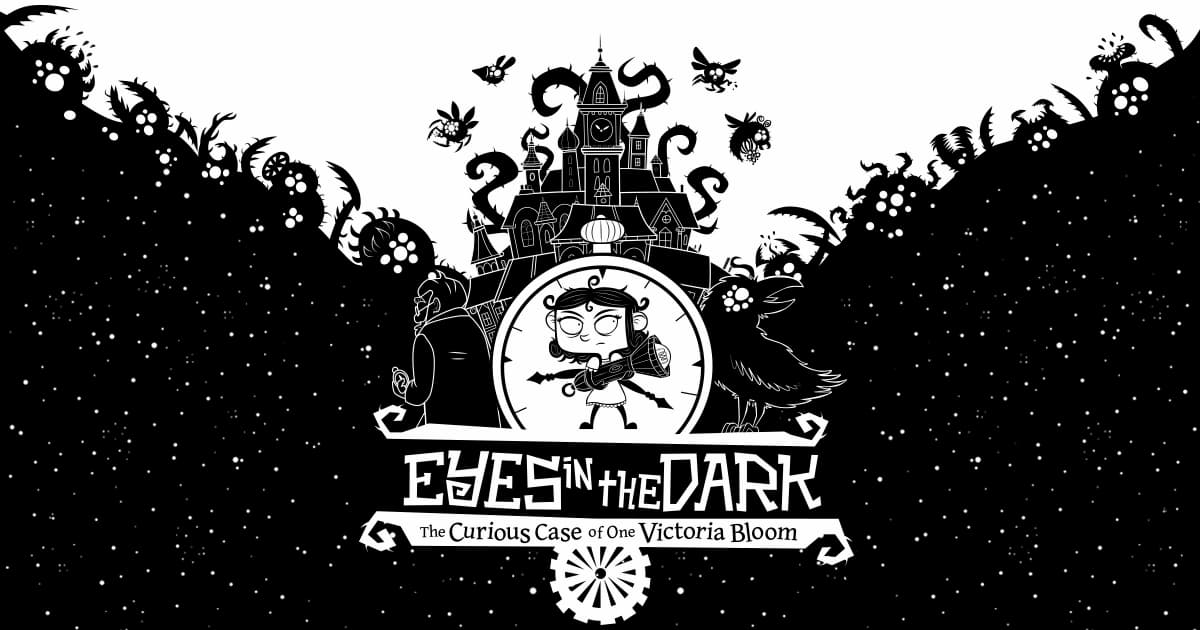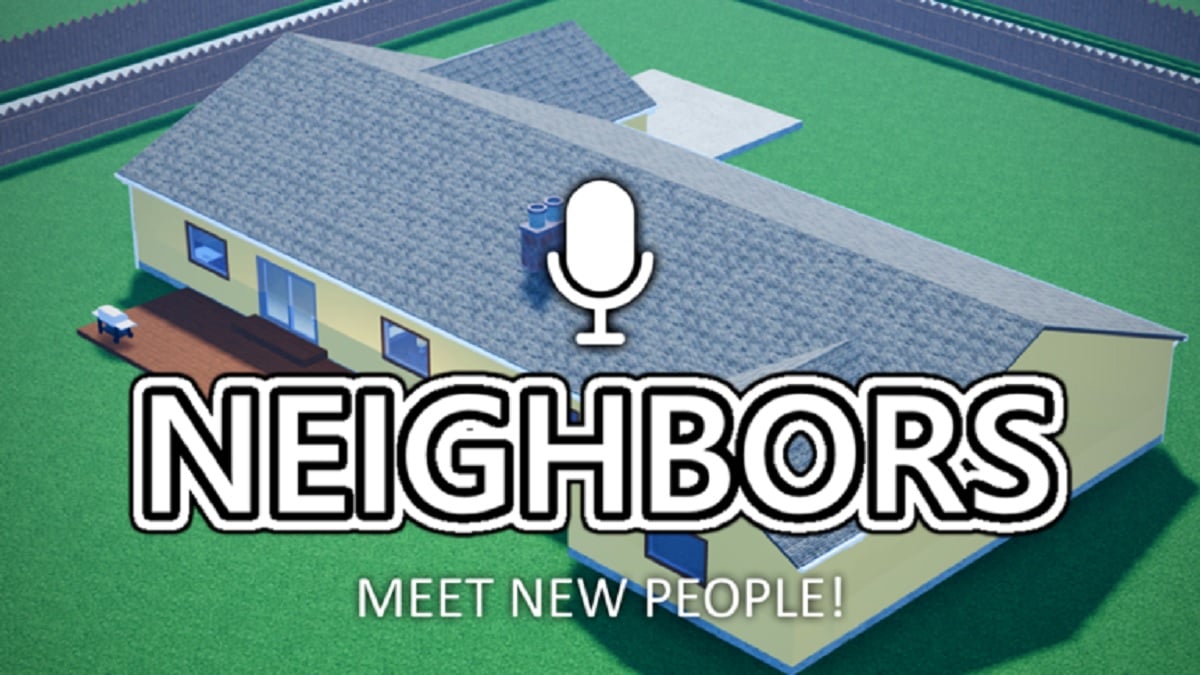Eyes in the Dark on PC
Billed as a roguelight, Eyes in the Dark: The Curious Case of One Victoria Bloom is one of the most unique side-scrolling rogue-lite games you’ll play this year. “Roguelight” is a clever little play on words, and a reference to the fact that protagonist Victoria Bloom only has a flashlight at her disposal as she tries to fend off the creepy-crawlies in the dark.
Right off the bat, Eyes in the Dark is immediately captivating with its Tim Burton-esque cartoonish visuals. The entire game is in black and white, and even reminiscent of silent movies where placards with character dialogue pop onscreen in between shots of characters gesturing towards each other. The game begins proper when we arrive at Bloom Manor, and Victoria is forced to explore the large creepy house in an effort to save her grandfather from what lurks within.
Along the way, she’ll uncover secrets about the Bloom family, as well as fancy upgrades for her flashlight, allowing her to dispatch her foes more easily.
After the short tutorial sequence introducing the game’s basic mechanics, Eyes in the Dark leaves everything open for the player to discover. Each run always starts off in the main hall, where you can pick up items or upgrades to prepare for the journey ahead, then go forth and see how far you can make it in the Manor.

The combat seems simple enough on paper; armed with only a flashlight, Victoria can use the right stick to aim it all around her, and focus the beam on her enemies to kill them. You can also jump up and down, and there are light platforming elements that will make the game’s design much more interesting and challenging at the same time. I’ll say this right now: if, like me, you’re not great at platformers, the early hours of Eyes in the Dark are gonna be pretty rough.
Don’t let the cute art style fool you. Eyes in the Dark doesn’t pull any punches when it comes to the difficulty; even in the early rooms, the enemies are relentless, and players are required to make full use of their surroundings to create space between them and their foes while trying to beam them to death. If you’re too slow in jumping up or down a platform to dodge an attack, you’ll take a little bit of damage. Doesn’t sound too bad, except for the fact that enemies love to swarm you and you’re constantly forced to move around while managing your flashlight beam to get out safely.
It certainly doesn’t help that the enemies in Eyes in the Dark are so damn creepy too. The enemy types in this game are mostly insectoids with a bit of an eldritch twist to them, which makes the game feel pretty unsettling to say the least. Oversized spiders are scary enough, but when you throw in tentacles and flying larvae, that’s where I draw the line. Like most other games in the rogue-lite genre, the boss encounters are unforgiving but fair. It’s on the player to really take the time to learn their patterns and respond accordingly, and like any good rogue-lite game, the feeling of satisfaction you get when you finally take them down after countless deaths is immeasurable.
The good news is that Eyes in the Dark does try to make your subsequent runs a little easier as well. While you do lose all your dungeon progress and flashlight attachments when you die, you can gain Knowledge the further you get into the game. When you die, you can then use your Knowledge to unlock special items and pick-ups in the main hall to give yourself a slight advantage on your next run.
Again, just like any good rogue-lite, knowledge of the dungeon itself is always the best reward you can ask for in Eyes in the Dark. While I certainly struggled in my early hours, thanks in no small part to my poor platforming skills, this is the kind of game that you’ll eventually just start to “get” over time. As I kepy playing, I slowly started to recognize the movement patterns of the various enemy types. While the rooms were ever-shifting, I began to quickly identify which platforms I needed to jump to immediately in order to clear the room quickly.

Eyes in the Dark also strives to make each run feel a little different than the last by introducing some really unique attachments for your flashlight. At the start, it might seem like your flashlight is only capable of shining a light in one direction, and the only worthwhile upgrades for it are beam strength and range. However, Eyes in the Dark began to surprise me as I uncovered more interesting upgrades. Before I knew it, I was firing off chain lightning beams, huge light projectiles, and what can only be described as tiny sonic waves that helped me clear out my immediate surroundings as I moved forward.
You’re also given the option to choose modifiers each time you enter a new area. You’re allowed one boon and one downside each time, and these can really help to shake up your runs. Of course, it’s always possible to soft-lock yourself by making bad choices and having a really sub-optimal build. You don’t want to be stuck with a short range flashlight, and a modifier that dictates that all enemies explode upon death for instance, but the variety is nice, and if you plan things out just right, your runs become a cakewalk.
If there are any complaints to be had with Eyes in the Dark, it would be that the game can feel a little unpolished in certain areas. The opening cutscene, for example, features Victoria reading a letter from her grandfather, but the text doesn’t fit the piece of parchment at all. There were also a few rare instances where the controls seemed to feel a little imprecise, where my jumps or dashes wouldn’t register until it was too late, and it’s the little niggles like these that can potentially make or break a run.
Eyes in the Dark is ultimately a unique and very distinctive entry in the rogue-lite genre. It certainly won’t resonate with everyone, but it’s well worth a look if you’re in the mood for a charming rogue-lite that looks like it just jumped out of a Tim Burton movie.
- Unique art style that sets it apart from a lot of other competitors in the genre.
- Fun flashlight upgrades that make your build feel unique.
- Lots of variables to help make your runs feel fresh.
- Visual bugs that make the game feel a little unpolished.
- Controls can be a bit wonky at times.
- If you suck at platforming, this game will probably make you hate life.





Published: Jul 22, 2022 09:00 am